Every lei begins with a feeling — sometimes a clear vision, sometimes just a quiet tug on your heart. For this new creation, Lei NINL#2001, I didn’t have the full picture in my head. I just knew I wanted to make something purely from 100% Kahelelani shells (ニイハウシェル). There’s something calming and honest about letting the shells tell their own story, don’t you think?
I chose to make this piece in a four-strand Poepoe tie style, about 18 inches long. This style gives me a little more flexibility and grace while I work — especially while my fingers are still healing. I started by looking through my trays to see which shells I already had pre-poked, because sometimes you just don’t have the patience to poke every single one right away.
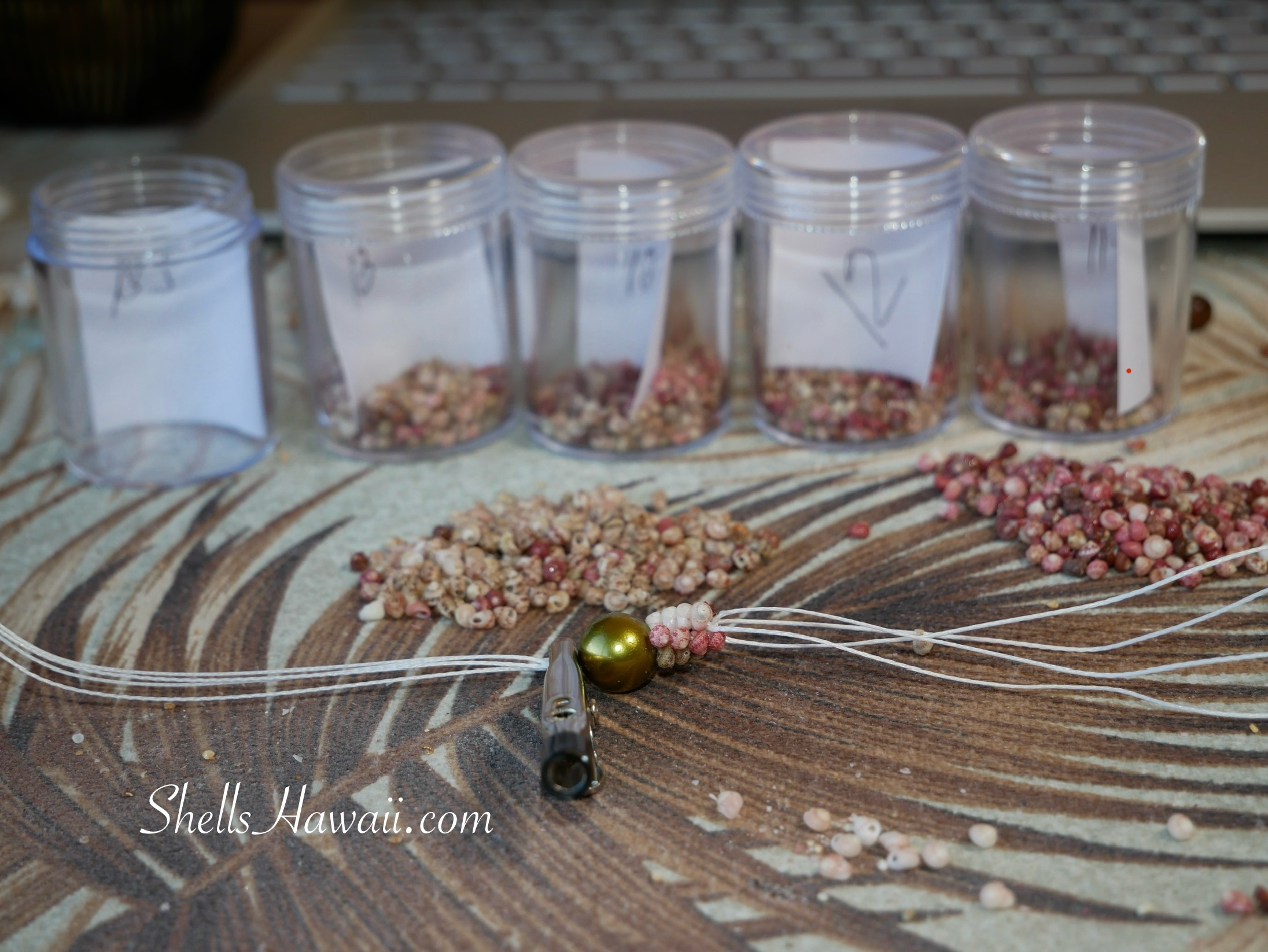
The center holds an 11.03 mm green Pistachio Tahitian pearl, surrounded by size 13.5 Kahelelani shells that will gradually shift smaller toward the ends. After sorting and placing each size neatly into little containers, I measured out four strings at 60 inches each. That’s always my favorite quiet moment — everything ready, waiting to turn into something beautiful, one tiny shell at a time.
Ever Wonder When You’ll Really Start to See Your Lei Pattern Take Shape?
If you’ve ever started a new lei and felt unsure of what it will look like — that’s completely normal. The only way to see your vision come to life is to start stringing. Once the shells begin to line up, that’s when the magic shows itself.

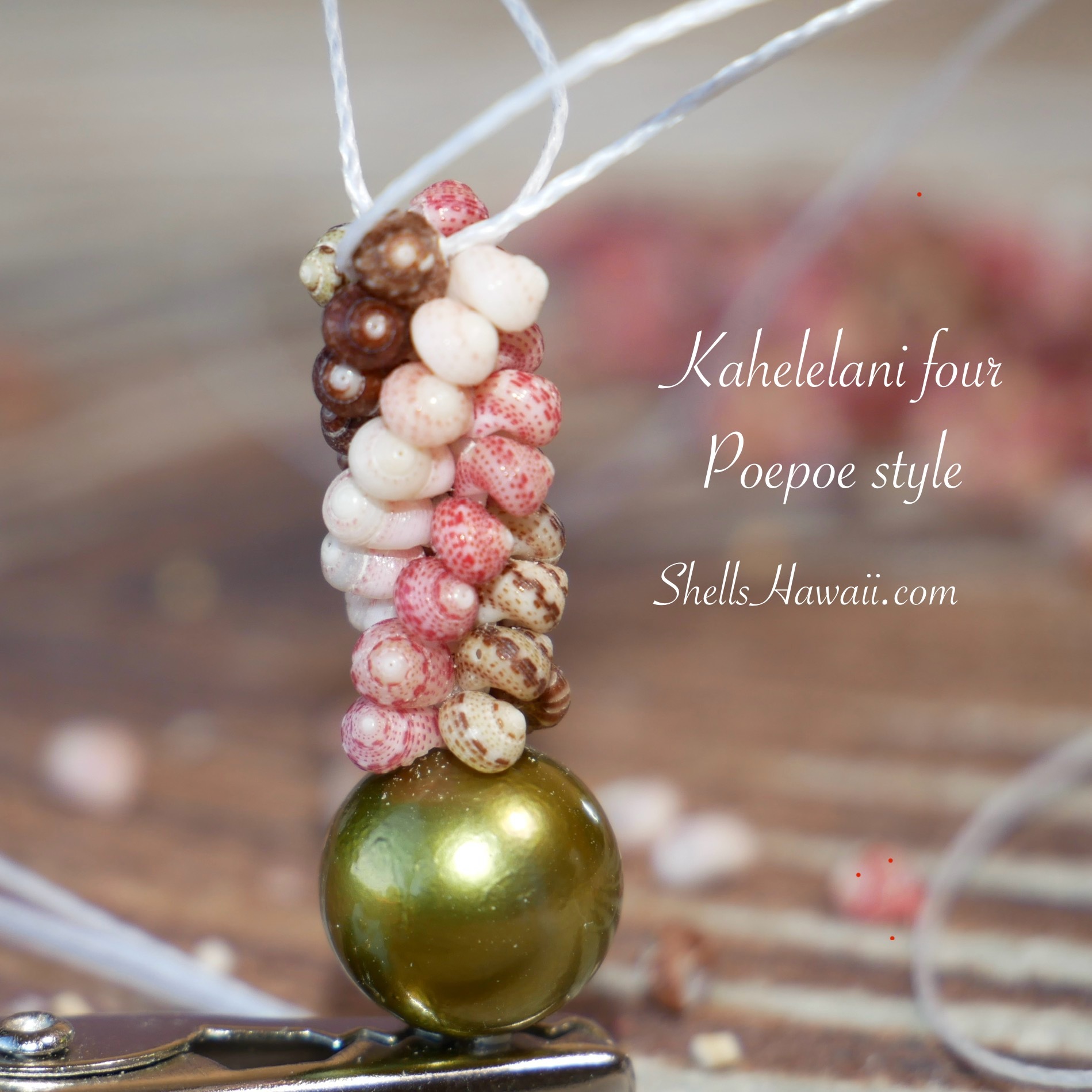
Usually, the first time you really see your pattern is around the 1.5-inch mark. That’s my “aha” moment — when vision and reality finally meet. And honestly, those two don’t always agree. Sometimes I think I know exactly what it’ll look like… then the shells have their own opinion!
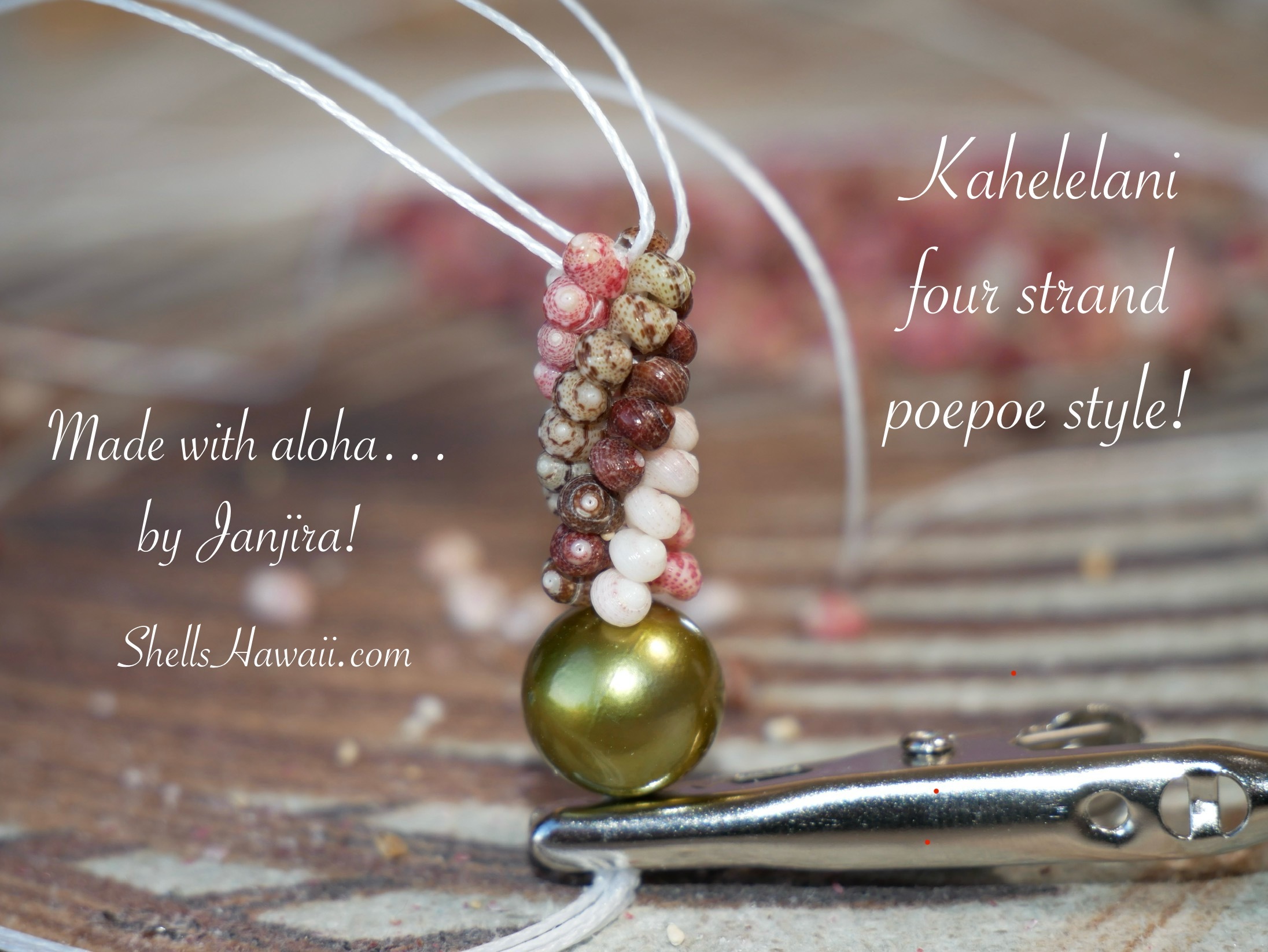
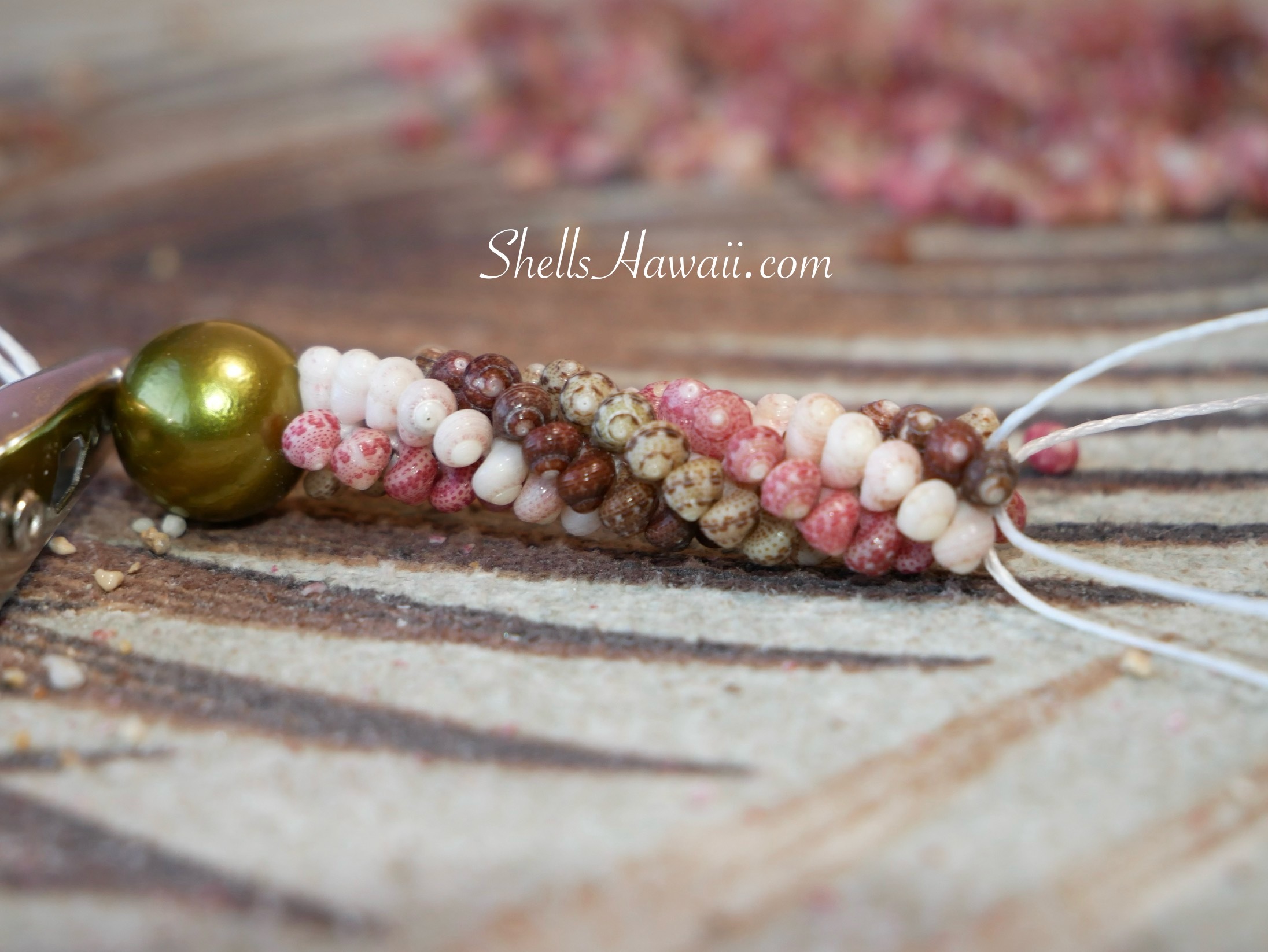
So here I am at 1.5 inches — loving the pattern and feeling that little rush of excitement that keeps me going. Oh, and a quick note from experience — next time, cut your string about 20-30 inches longer than you think you’ll need. It’s always better to have extra than to run short halfway through.
Building the Flow — Color and Pattern
Once my first section was done, I paused to write down the shell sizes and color counts I used — a small habit that saves a lot of guessing later.
At this point, I felt the lei needed a touch of contrast, so I added Kahelelani Keʻokeʻo shells. People often imagine “Keʻokeʻo” means pure white, but these shells are actually a soft cream with tiny hints of blush and beige — more like the inside of a seashell than bright white. They sit gently beside the pinks, adding light without stealing attention.
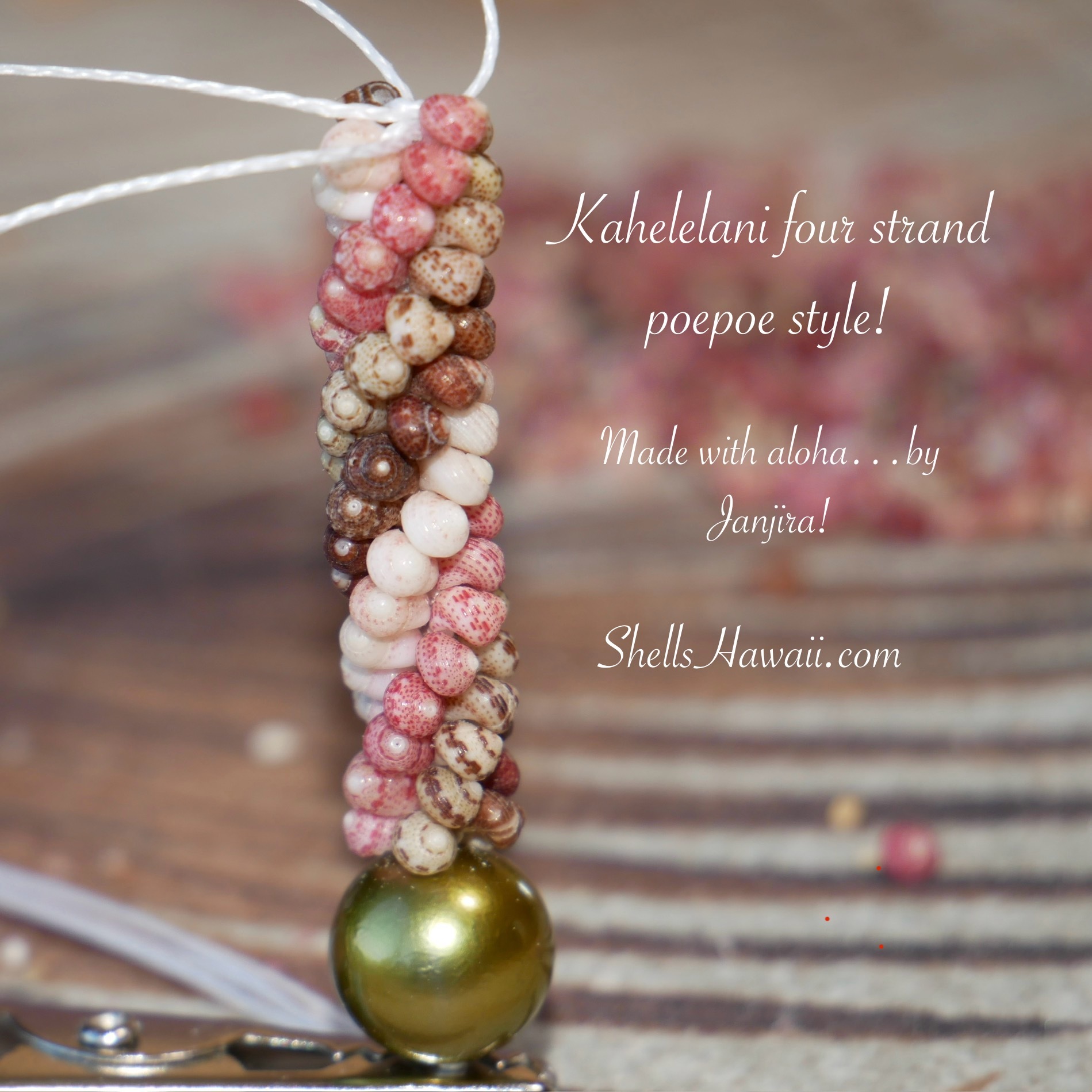
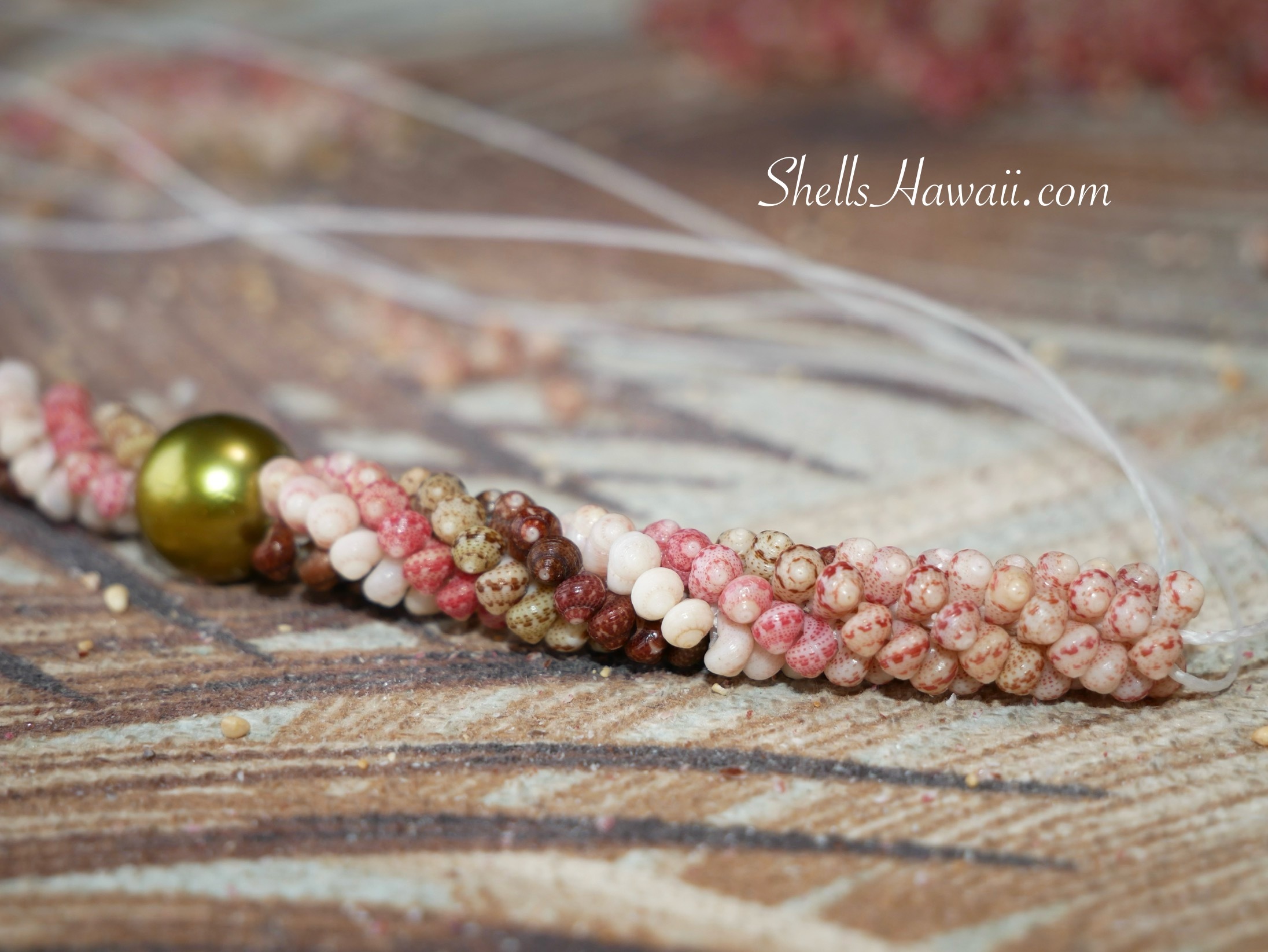
After that, I continued into another spiral, shifting from Kahelelani Mākuʻe (brown) to a deeper chocolate tone collected on Kauaʻi. Those darker shells have such high luster — when the light hits them, they almost glow. Together, these shades give the lei warmth and depth, like sunset tones fading into dusk.
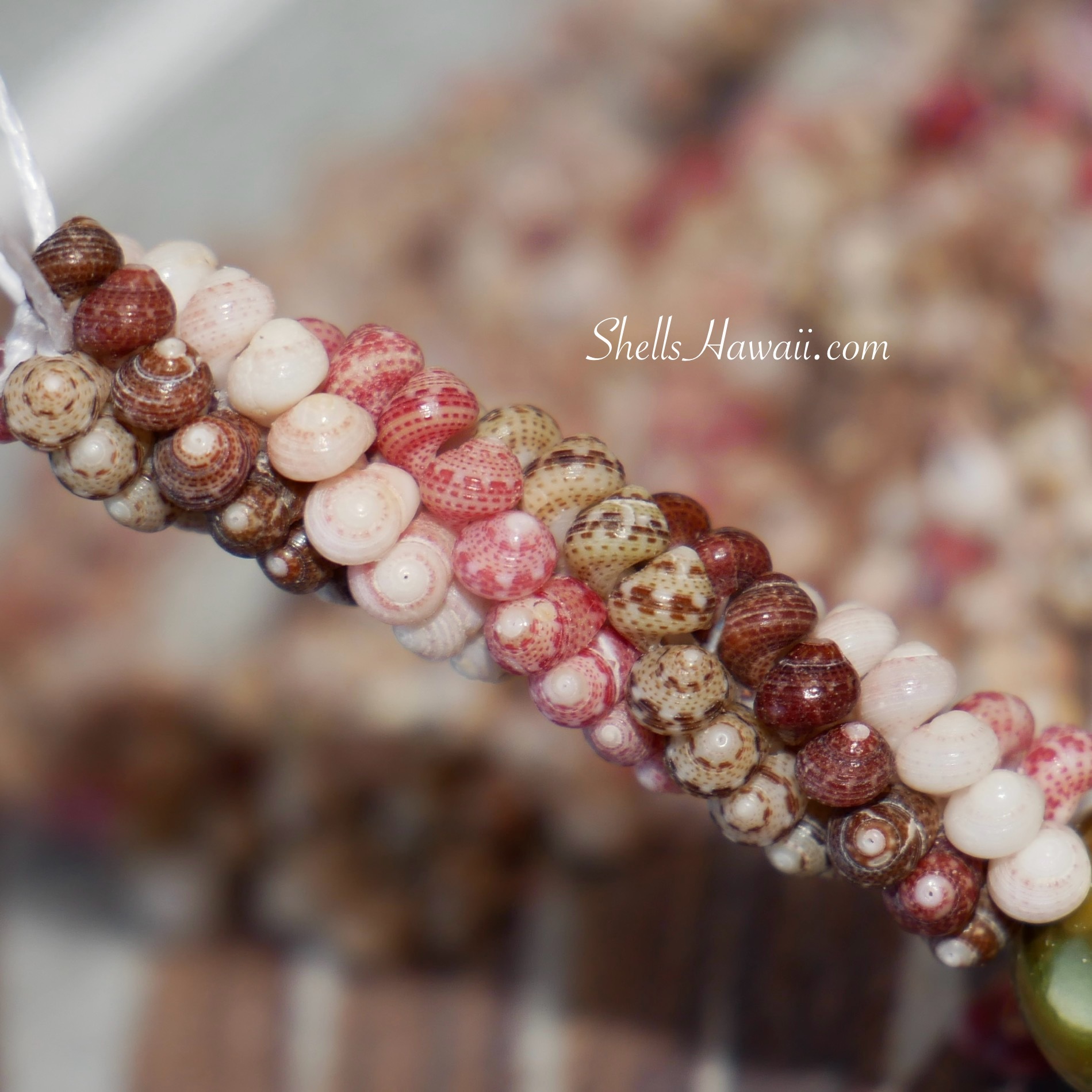
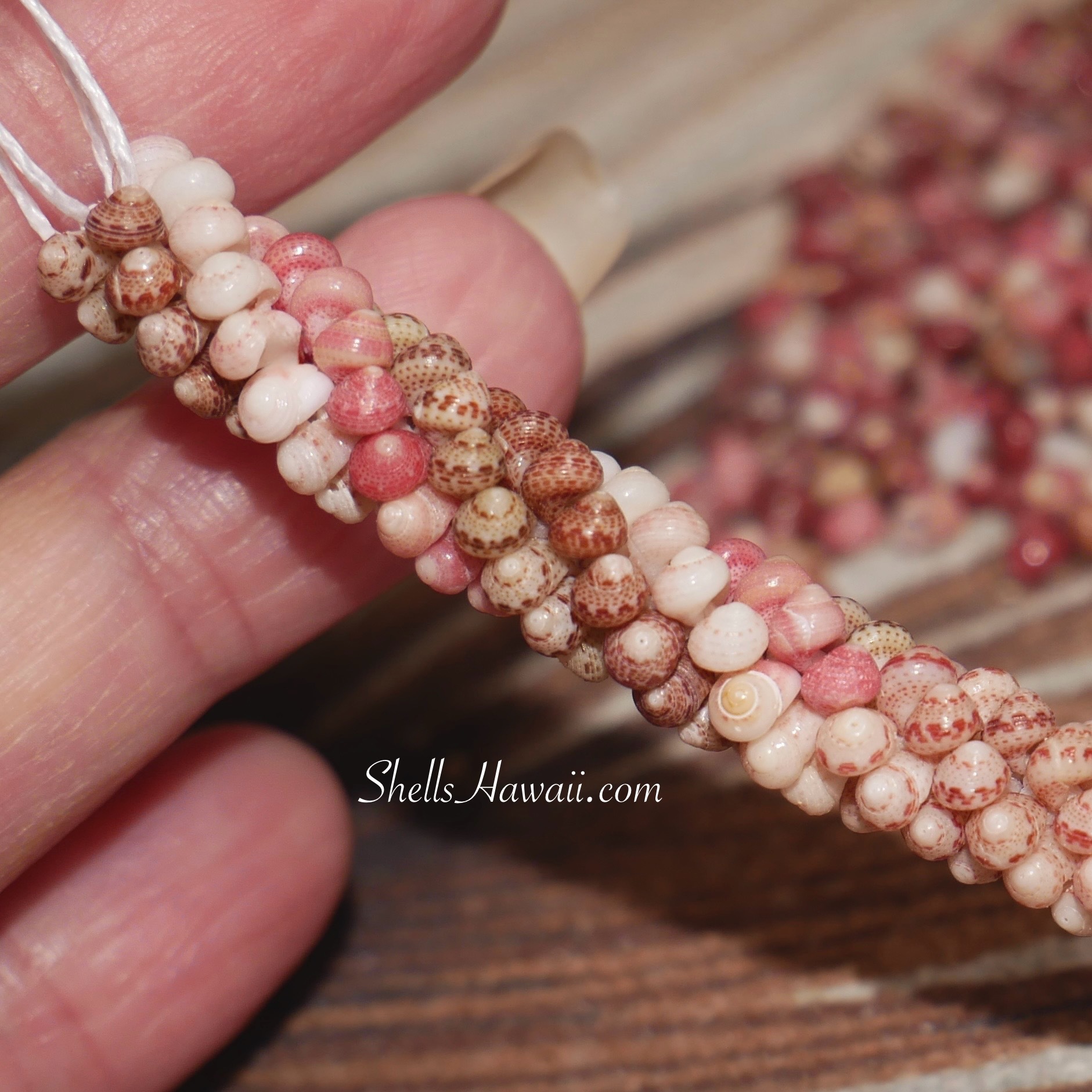
If you’re curious about Kahelelani shell colors and what they mean, I share more in this post:
➡️ What Are Kahelelani Shells?
Starting from the Middle — My Way of Working
I’ll tell you a little secret — I don’t always pre-poke all my shells first. Why? Because, honestly, poking puka takes forever, and if I can’t see progress, I get restless. I like watching the lei take shape as I go.
Most of the time, I start right from the middle. It helps me use my largest shells first and then work outward. Just make sure you have enough for both sides before you get too far — trust me, that saves a lot of frustration later.
I’ll poke and string until I can see my pattern forming — that’s when the excitement kicks in. If I plan to change shell sizes, I’ll begin stringing the opposite side early to make sure everything matches. It’s not the fastest method, but it’s the one that fills me with joy — watching the lei grow slowly, strand by strand, like something alive.
Fixing Alignment in the Spiral Pattern
Now, here’s a real-life moment that happens to all of us who make Poepoe spiral (ポエポエスパイラル) designs. You’re stringing along, everything’s perfect — then suddenly one shell sits out of line.
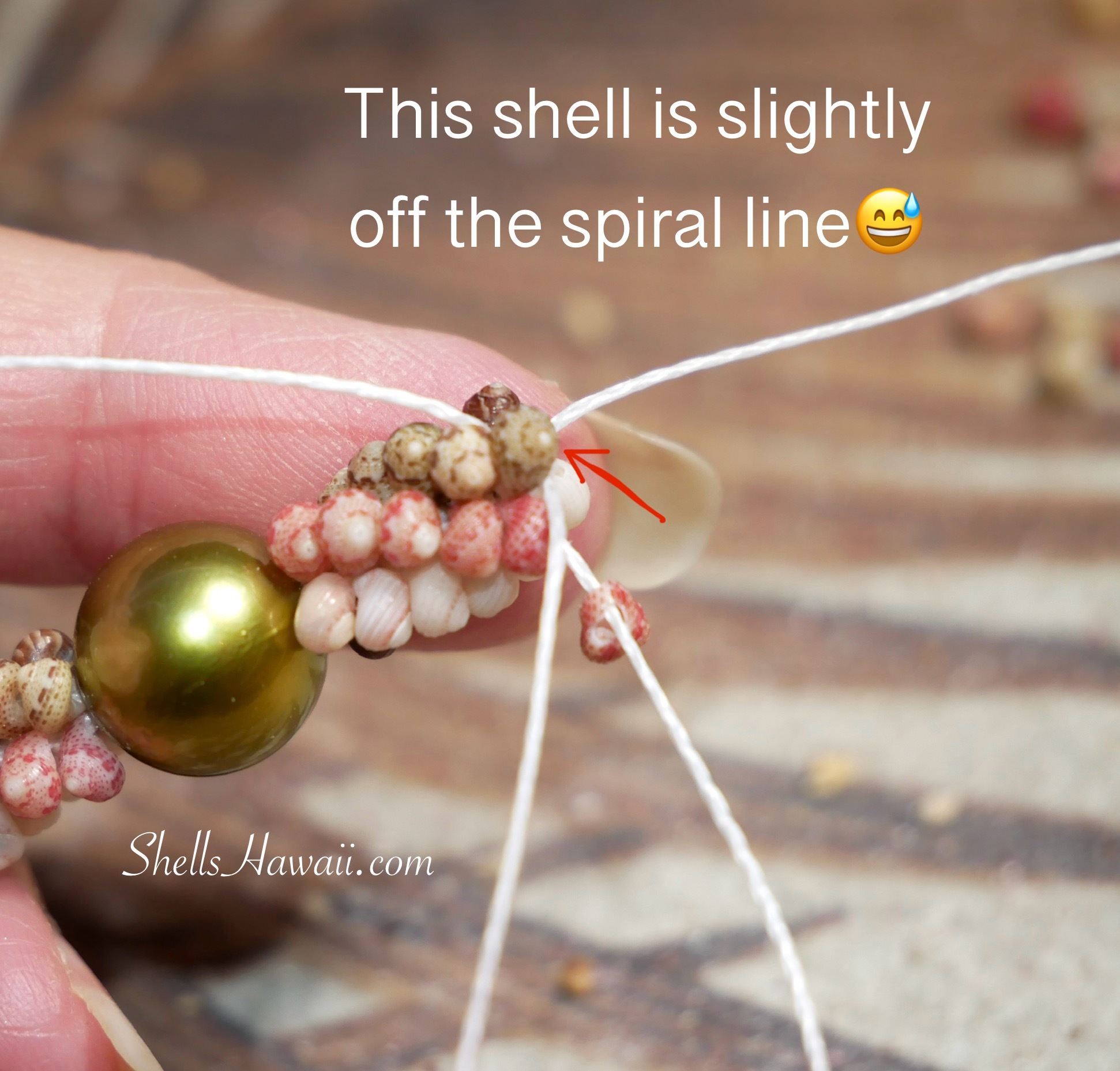
Don’t panic! Just use your finger to gently push it back into place. If it still won’t behave, swap that shell for another of the same size — sometimes the hole angle is just slightly off.
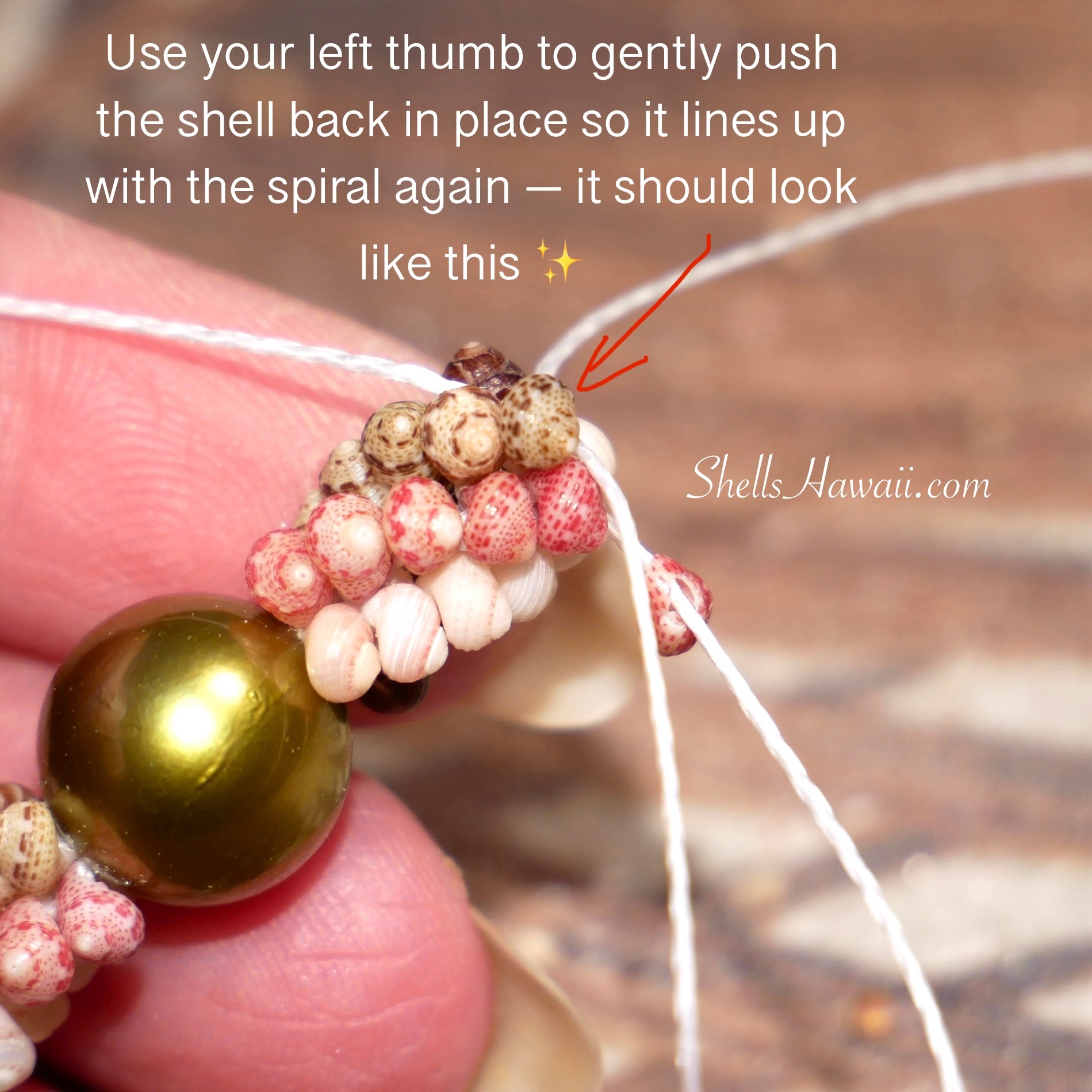
In a Poepoe tie style, you might see a tiny bit of thread showing here and there. That’s completely normal. The goal is to minimize it so the thread blends into the rhythm of the pattern. Small details like that keep your lei looking smooth, clean, and full of flow.
Mirror Check — Count (Don’t Just Measure)
Before moving on, here’s something I always do — count, don’t just measure. Measuring can trick you, but counting won’t.
Quick checklist:
• Count shells in each color block (left vs. right)
• Count rows or twists in the spiral
• Confirm where color changes start and end
• Fix any mismatch now — it’s easier than later
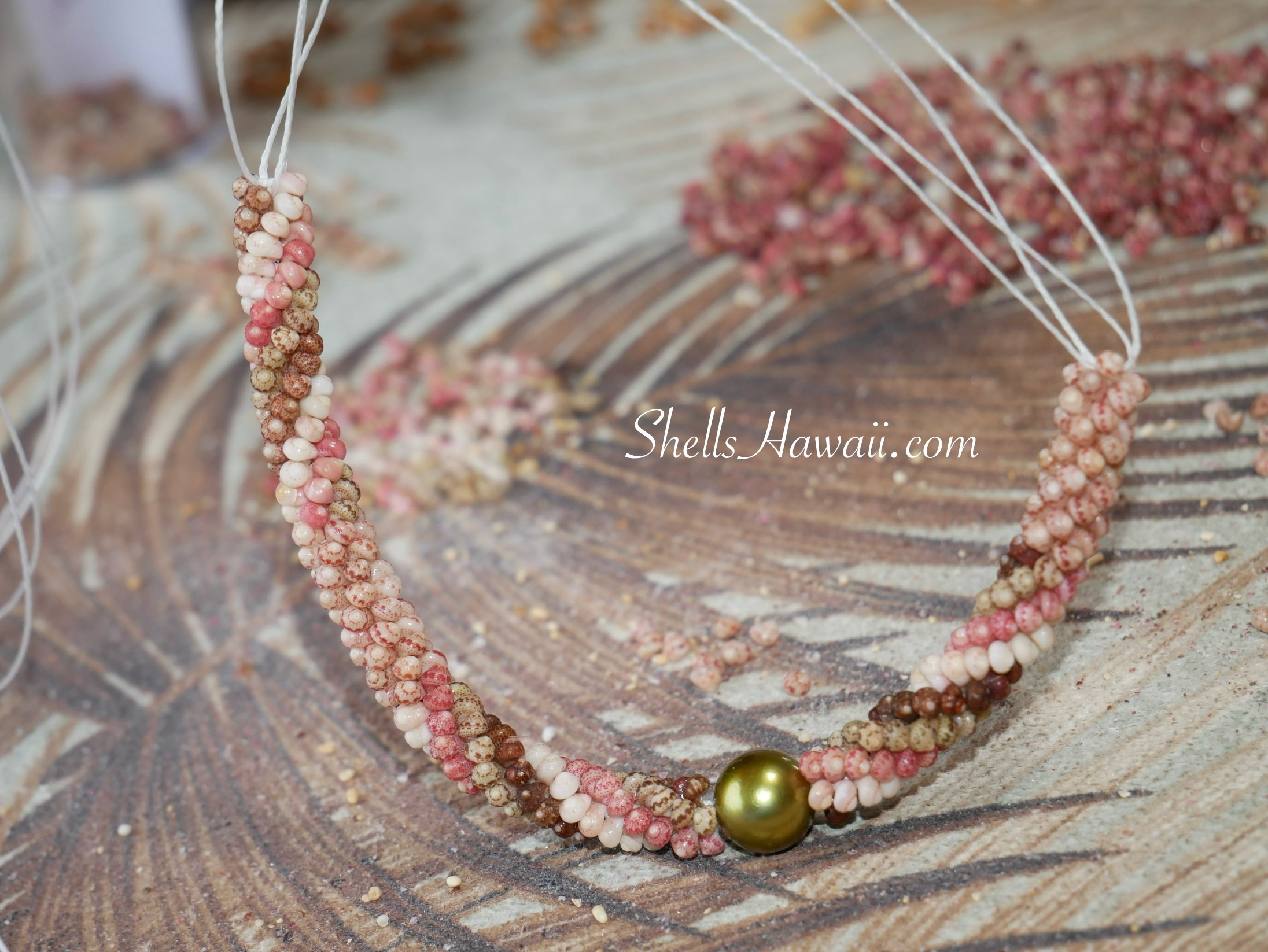
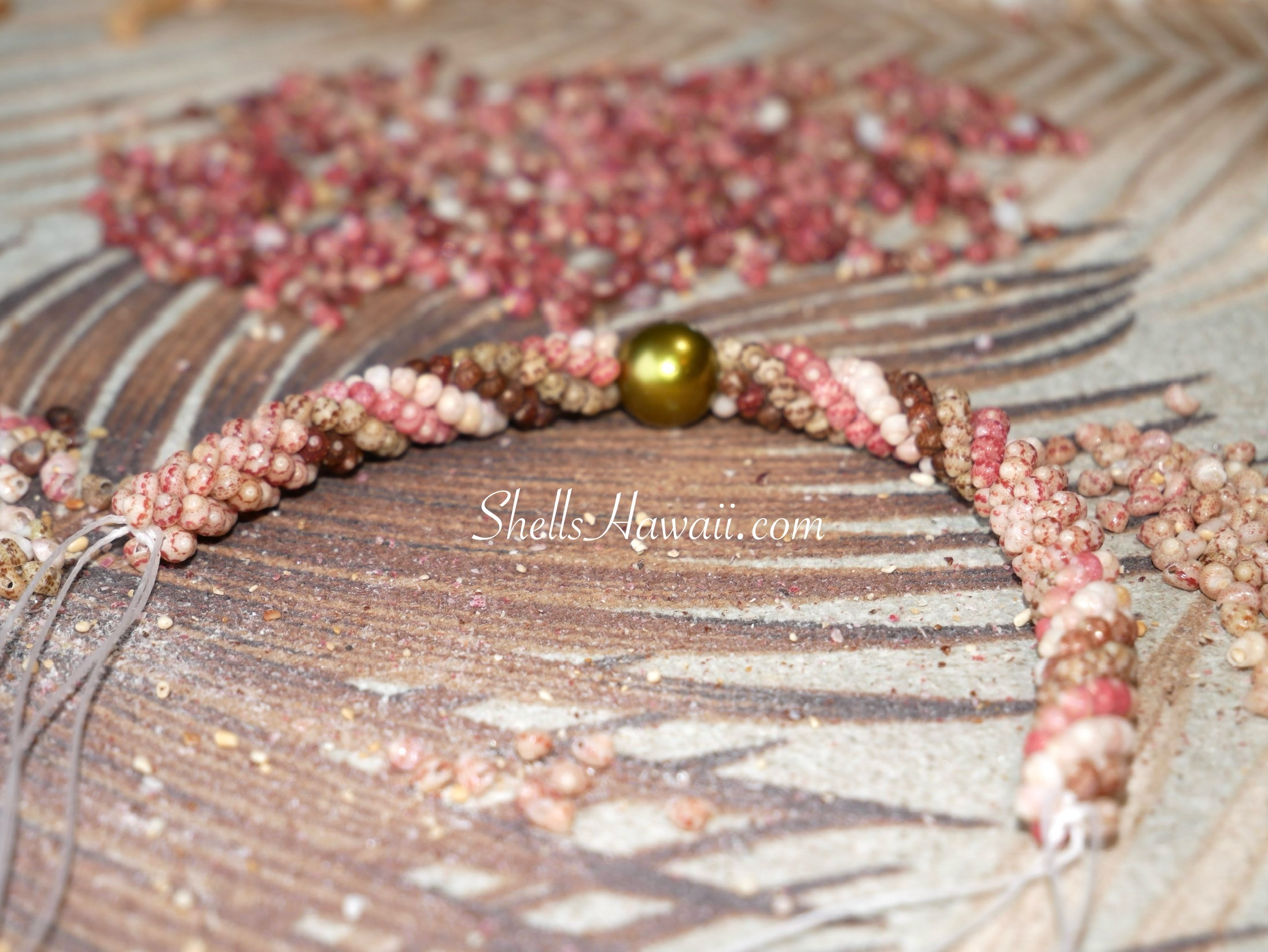
A Little Reality Check — Did I Break Any Shells?
If you’re wondering whether I broke any shells while making this lei… yes, I absolutely did! And here’s the proof — a little bowl full of them, each one a reminder of how delicate these tiny treasures are.
Breaking shells is just part of the process. It happens when you’re poking, stringing, or even when adjusting the pattern just a little too tightly. You’ll hear that tiny crack and your heart drops for a moment — then you take a breath, smile, and keep going.
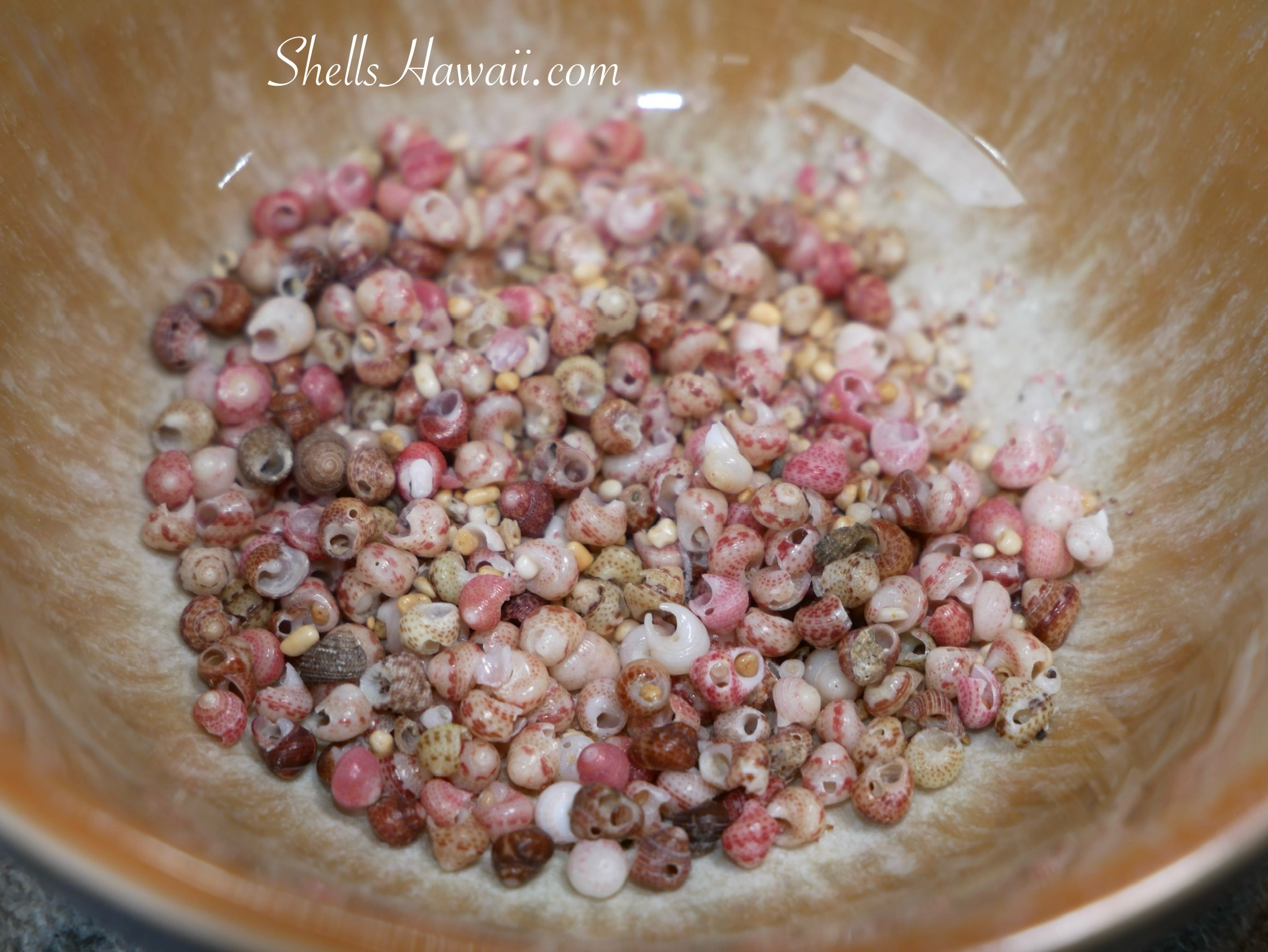
And let’s talk about my poor fingers for a moment — they were definitely ready for a break! I told myself I wouldn’t do too much poking this time, but somehow I ended up poking most of the shells anyway, lol. I guess that’s what happens when you start enjoying the process more than you realize.
All of the broken shells will go into my imperfect shells jar, where I keep every little one that didn’t make it into a lei. Over time, it fills up — and when the holidays come, I’ll have enough to give away to anyone who might need them for crafts, practice, or even just inspiration.
A Little Tip on Matching Colors (and Making What You Have Work for You)
When you’re working with lots of shades, don’t worry if both sides aren’t perfectly the same. Even if you try your best, shells have their own personalities — that’s part of their charm.
Each one grows differently — some darker, some lighter — just like people. Even twins aren’t identical. That’s what I love most about Niʻihau shell jewelry (ニイハウシェル ハワイアンジュエリー): every piece feels alive, each shell carrying its own story from the sea.
So instead of chasing perfection, look for balance and harmony. That’s where the beauty lives — in the aloha you give to every shell you touch.
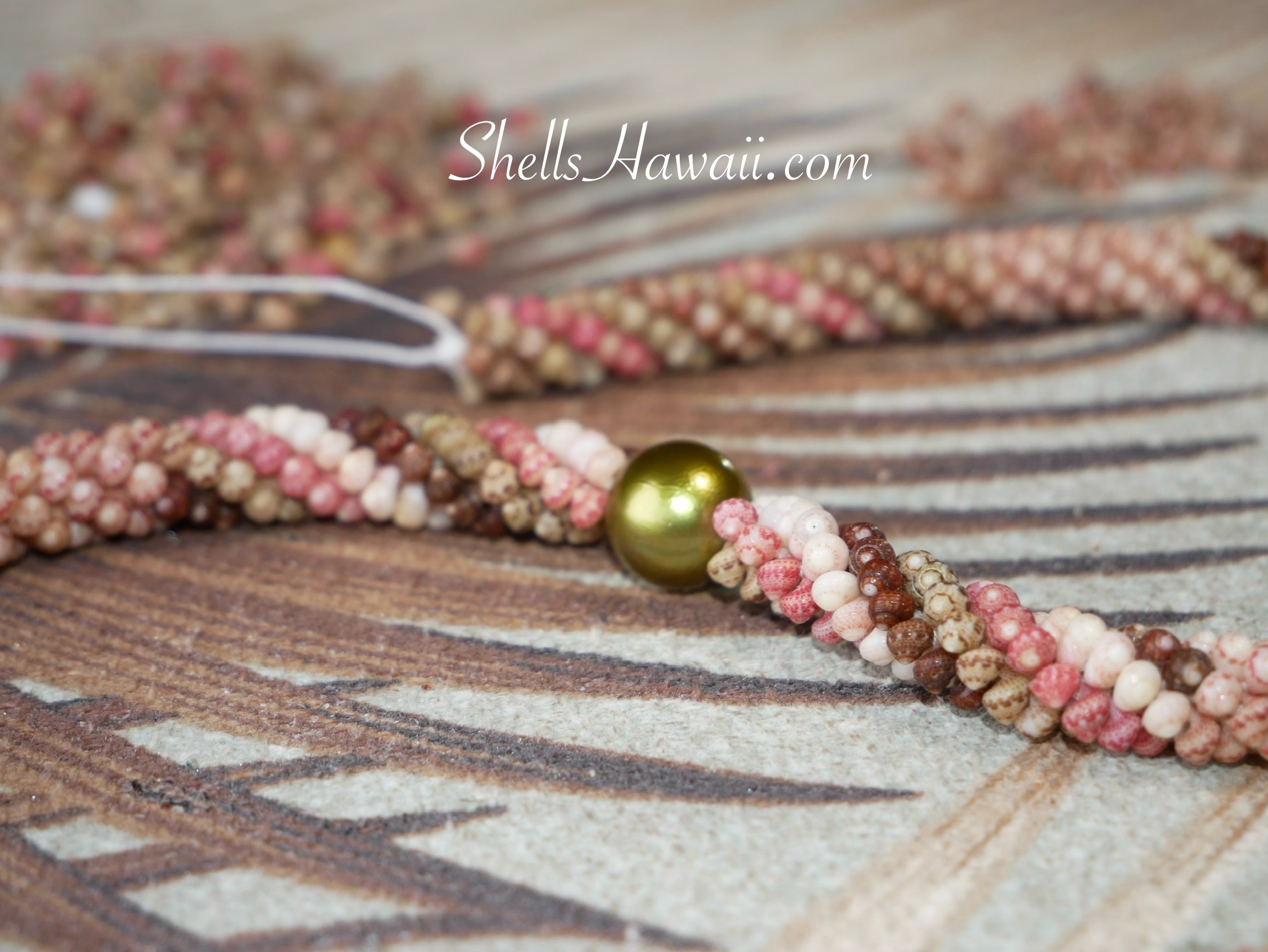

The Finished Lei — Flow, Balance, and Grace
This lei shifts gently from size 13.5 to 13, then finishes with 12.5, giving it soft movement and a natural taper. The spiral pattern flows like ocean waves — calm, rhythmic, and full of life.
The color blend — pinks, creams, browns, and deep chocolate — feels warm and grounded, like sunrise over Kauaʻi. I finished it with a 14K solid gold safety clasp, giving the piece a timeless, classy finish that complements its natural beauty.
When I look at it, it feels peaceful, balanced, and full of aloha — the kind of creation that doesn’t need to speak loudly. It simply shines on its own.
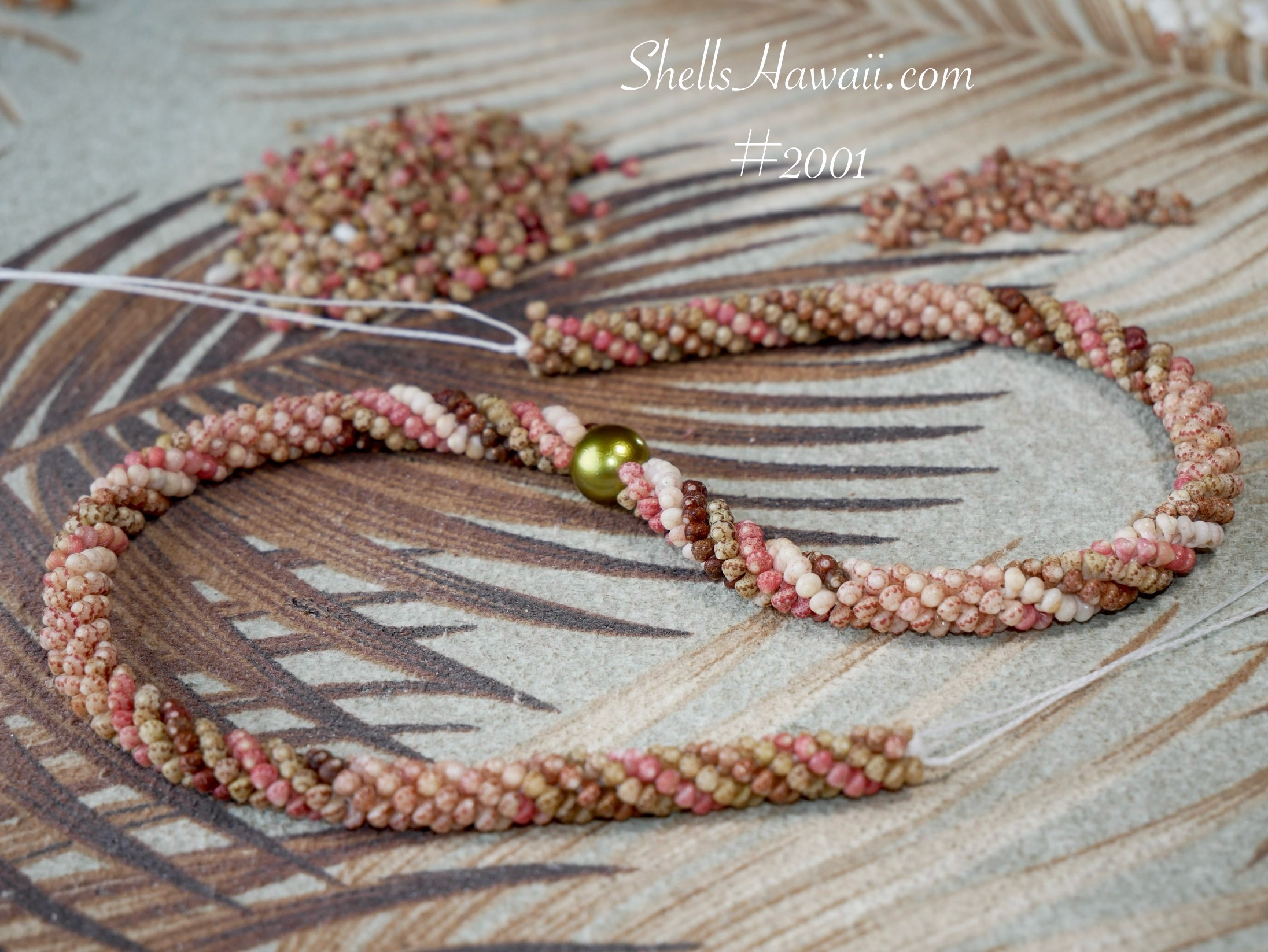
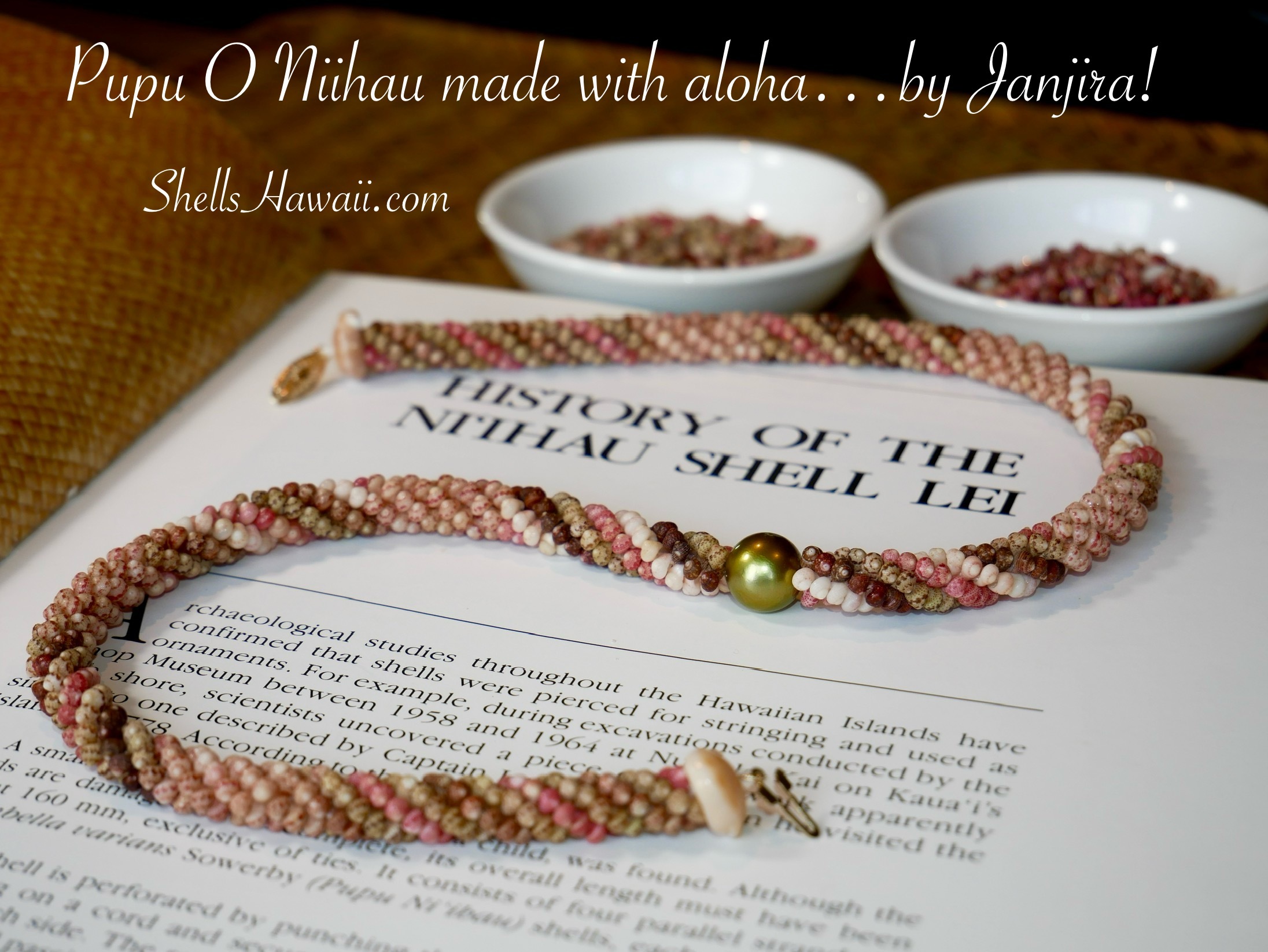
If you’re interested in this lei, please feel free to click here to view it on my website. If you have any questions, please don’t hesitate to contact me any time — I’ll be more than happy to help and answer any of your questions.
You can also explore more helpful information in my Buyer’s Guide or find thoughtful ideas in the Gift Guide.
 USD
USD

